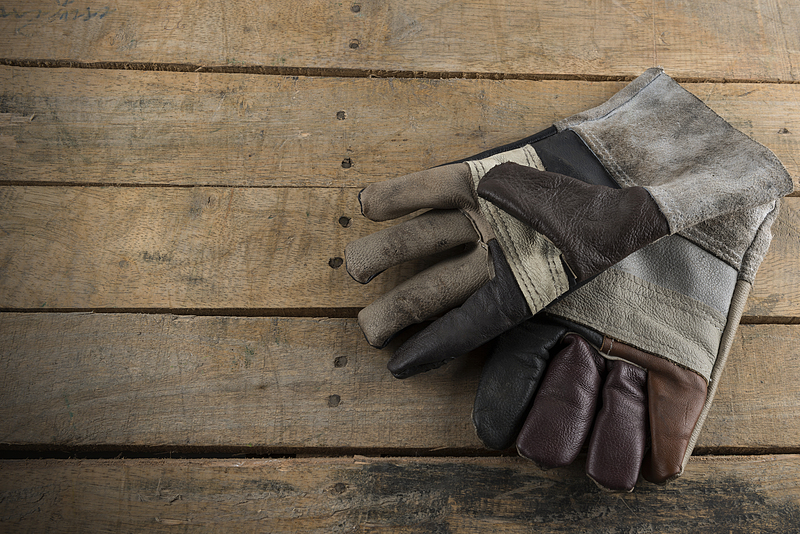Safeguard Your Sofa for the Future with Long-Term Storage Know-How
Are you planning to store your favorite sofa for an extended period? Whether you're moving, downsizing, or simply saving your beloved furniture for a new space, learning how to properly protect your couch during long-term storage can make all the difference. This comprehensive guide will empower you with practical strategies, expert tips, and essential knowledge for long-term sofa storage. By following these best practices, you can ensure your sofa emerges from storage looking and feeling as good as the day you put it away.
Why Carefully Storing Your Sofa Matters
Your sofa is more than just a piece of furniture--it often represents a significant investment and the heart of your living space. Preserving its value and condition requires more than just covering it with a sheet. Improper storage can lead to damage from moisture, pests, dust, and physical stress. Over time, these factors can ruin upholstery, warp frames, and even compromise the structural integrity of your couch. Understanding the nuances of long-term sofa storage will safeguard your furniture for the future, giving you peace of mind and saving money in the long run.

Preparing Your Sofa for Long-Term Storage
Before storing your sofa, preparation is key. A clean, well-protected sofa will emerge from storage in much better condition. Here's how to get your couch ready for storage:
1. Clean Thoroughly
- Vacuum all surfaces: Remove dust, dirt, pet hair, and crumbs from every nook and cranny using a vacuum with a brush attachment.
- Treat stains: Use fabric-appropriate cleaners for upholstery or gentle wood cleaner for exposed frames. For leather sofas, apply a suitable leather cleaner and conditioner.
- Let it dry: Ensure no moisture remains after cleaning. Dampness can cause mold and mildew during storage.
2. Disassemble If Possible
- Remove cushions and pillows: Store these separately in breathable bags or boxes to prevent flattening and to allow airflow.
- Detach legs or arms: If your sofa allows, remove legs or arms and put the hardware in labeled bags. This not only makes the sofa easier to transport but helps prevent breakage.
3. Protect with the Right Materials
- Wrap in blankets: Use moving blankets or thick quilts to shield the frame and upholstery from dust and scratches.
- Avoid plastic wrap on upholstery: While plastic sheeting can keep away moisture, it can also trap condensation and encourage mold. For fabric sofas, use breathable covers like cotton or canvas. For leather, a soft, breathable cloth is ideal.
- Tape down protective coverings loosely: Avoid using tape directly on the sofa surface as this can cause residue or damage.
Finding the Right Long-Term Sofa Storage Solution
Selecting the correct storage environment is critical to safeguarding your sofa's future. Let's explore the options:
Climate-Controlled vs. Standard Storage Units
- Climate-controlled storage: These units regulate temperature and humidity, protecting sofas from mold, mildew, warping, and fabric deterioration. They're especially recommended for leather, antique, or expensive sofas.
- Standard storage units: More affordable but lack environmental controls. Suitable for sturdy, less sensitive sofas, but require extra precautions against moisture and temperature extremes.
Selecting the Best Location
- Off the ground: Place your sofa on wooden pallets or blocks to avoid contact with the cold, damp floor. This helps air circulation and protects against unexpected flooding.
- Positioning matters: Store your sofa upright if possible, but ensure it's stable. If lying flat, avoid stacking heavy items on top, which causes sagging and distortion.
- Leave space around: Allow enough room for air to circulate. Packed storages encourage mold and pests.
Home Storage: Garage, Attic, or Basement?
- Garage or basement: These areas are often vulnerable to dampness and temperature swings. Use a dehumidifier to limit moisture if storing here, and cover the sofa well.
- Attic: Attics can become excessively hot and dry, which may cause fabric or leather to dry out and crack. If the attic is your only option, invest in thick covers and check the sofa regularly.
How to Protect Your Sofa from Common Storage Hazards
Understanding and eliminating hazards is crucial. Here's how to tackle the top risks to your sofa during long-term storage:
1. Moisture and Mold
- Use desiccants: Place silica gel packets or moisture absorbers nearby to collect excess moisture in the air.
- Check for leaks: Ensure your storage space is dry, well-ventilated, and free of leaks before moving your sofa in.
- Never store a damp sofa: Even trace amounts of moisture can lead to musty odors and mold growth.
2. Pests and Insects
- Inspect storage space: Clean the area thoroughly beforehand and look for signs of rodent or insect activity.
- Use pest deterrents: Safe, non-toxic pest repellents can help keep unwanted visitors at bay.
- Avoid food: Don't store food or anything edible near your sofa, as this attracts pests.
3. Sunlight and Fading
- Keep covered: Always protect your sofa from direct sunlight--even in storage--to prevent fading and discoloration.
- Opaque covers: Use opaque blankets or covers, as transparent plastic still allows some UV rays through.
4. Physical Damage
- Separate from heavy items: Don't stack weighty boxes or sharp objects on your sofa, which can dent and deform cushions or frames.
- Stabilize the sofa: Prevent falls or crushing by making sure the sofa is balanced and not susceptible to tipping.
Special Considerations for Upholstery Types
Your sofa's upholstery material plays a major role in how it should be stored long-term. Here are the main types and their particular storage needs:
Fabric Upholstery
- Avoid plastic wrap, which can trap condensation and cause mold.
- Vacuum thoroughly before wrapping in breathable cotton or canvas covers.
Leather Upholstery
- Apply leather conditioner to prevent drying and cracking during lengthy storage periods.
- Cover with a soft, non-abrasive sheet or cloth (not plastic).
- Use climate-controlled storage to avoid extreme temperatures and humidity.
Microfiber or Synthetic Materials
- Clean according to manufacturer instructions before storing.
- Wrap in breathable material to avoid trapping moisture.
Step-by-Step Guide: Storing Your Sofa for the Long Haul
- Clean the sofa and let it dry completely.
- Disassemble removable legs, cushions, and arms.
- Wrap each part in protective, breathable materials.
- Prepare the storage space-- clean, dry, with airflow and elevation off the floor.
- Transport safely to the storage unit, avoiding jostling or scratching.
- Arrange the sofa upright and with plenty of surrounding space.
- Check periodically during storage and refresh pest/moisture barriers as necessary.
Expert Tips for Hassle-Free, Long-Term Sofa Storage
- Document the process: Take photos of your sofa before and after wrapping. This helps with insurance and reassembly.
- Label disassembled parts: Keep screws, legs, and hardware in marked bags.
- Insurance counts: Consider insuring your valuable sofas against loss or damage during their time in storage.
- Don't forget about ventilation: Even a small, battery-operated fan can help keep air moving in closed storage spaces.
- Schedule regular checks: Every few months, visit your storage unit to ensure your sofa's environment remains ideal.
Frequently Asked Questions about Futuristic Sofa Storage
- How long can a sofa be stored without damage?
With proper preparation and a climate-controlled, clean environment, a sofa can be stored safely for years--sometimes even decades! - Is it safe to store a sofa in a regular garage?
Only temporarily. Long-term storage in a garage is riskier due to fluctuating temperatures, dampness, and pests. - What's the best way to keep my leather sofa from cracking in storage?
Always use a leather conditioner before storing, keep the sofa covered with a breathable cloth, and use climate-controlled storage. - Should I stand my sofa on end or lay it flat?
It's best to keep the sofa in its normal position if possible, but ensure stability. If standing it up saves space, make sure it's properly supported. - Can I use shrink wrap on my sofa?
Avoid shrink wrap for upholstery, as it can trap moisture and promote mold. Use breathable fabric covers instead.

Unveiling the Future: Removing Your Sofa from Storage
When the time comes to retrieve your sofa from long-term storage, the following steps will ensure it transitions back into your home seamlessly:
- Unwrap with care: Remove all layers of protective covering gently to avoid snags or damage.
- Air it out: Let your sofa breathe outdoors or in a well-ventilated room before use.
- Freshen up: Vacuum the sofa again and spot clean if needed. Leather sofas may benefit from a renewed application of conditioner.
- Reassemble: Carefully put all parts and hardware back together using your labels and photos.
Summary: Secure the Longevity of Your Sofa with Smart Storage Choices
Long-term sofa storage isn't just about protecting a piece of furniture--it's about safeguarding your comfort, your memories, and your investment. By observing key steps--cleaning, disassembling, wrapping in the right materials, and choosing an optimal storage solution--you can ensure your sofa remains in excellent condition for years to come.
To preserve your sofa's future, remember:
- Thorough preparation before storage is crucial.
- Choose the right storage environment--climate-controlled is best.
- Protect against moisture, pests, sunlight, and physical stress.
- Regularly check and maintain the storage space.
By following this expert know-how, you'll safeguard your sofa for whatever the future holds.
Now that you're well-versed in the art of long-term sofa storage, investing a little effort today can preserve your comfort for tomorrow! Share your storage success stories and tips below, and spread the knowledge to keep homes furnished for the future.